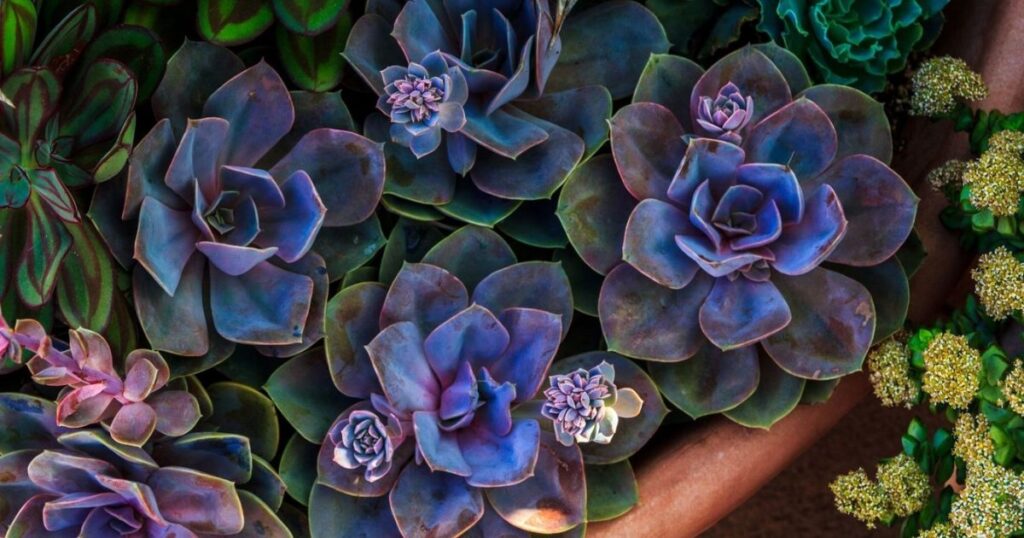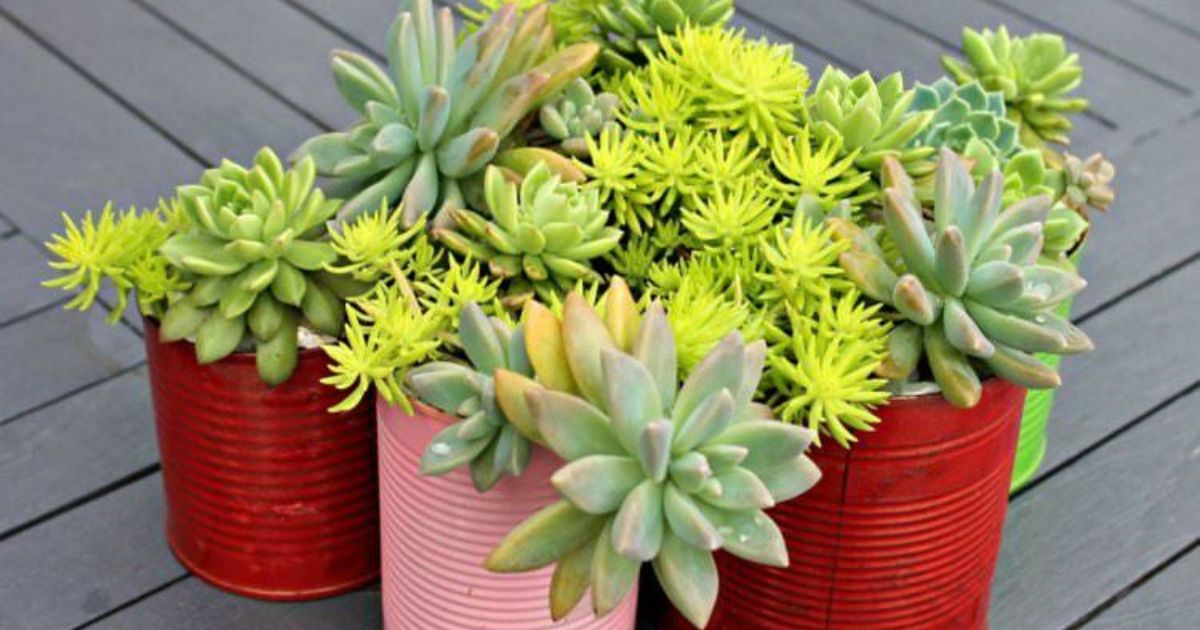A squishy succulent is one that feels soft to the touch due to overwatering or rot. When the succulent absorbs excess moisture, its leaves become mushy and lose their firmness. This can be harmful to the plant as it affects its health and can lead to root rot. To revive your succulent, reduce watering and ensure well-draining soil.
Discover the secret to reviving your precious succulents in just a few simple steps! Are you wondering, Why is my succulent squishy? We’ve got the answers you need to bring your succulent back to life. Join us on this succulent-saving journey and say goodbye to squishy woes. Let’s rescue your beloved plants together.
A succulent becomes squishy when it absorbs too much water, causing its leaves to lose firmness and become soft to the touch. Overwatering or poor drainage can lead to this condition. To prevent squishiness, it’s essential to adjust your watering habits and ensure proper soil drainage for your succulents.
Understanding Succulents
Before delving into the causes and solutions for squishy succulents, it’s essential to have a basic understanding of these remarkable plants.
What Are Succulents
Succulents are a diverse group of plants characterized by their ability to store water in their leaves, stems, or roots. This adaptation allows them to thrive in arid and semi-arid regions, where water is scarce. Succulents come in various shapes, sizes, and colors, making them popular choices for both indoor and outdoor gardens. However, if you find that your succulent is turning yellow, you may be wondering, “why is my succulent turning yellow?” There are several potential reasons for this, including overwatering, insufficient sunlight, or nutrient deficiencies. It’s essential to address these issues promptly to ensure the health and vibrancy of your succulent plants . Maintenance, High Appeal
One of the reasons succulents have gained popularity is their reputation for being low-maintenance. They are known for their ability to withstand neglect and thrive in a wide range of conditions. However, this does not mean they are invincible, as the issue of squishy succulents demonstrates.
Why Is My Succulent Squishy
When you notice that your succulent is turning squishy, it’s essential to identify the underlying cause. Several factors can contribute to this issue, and it’s crucial to pinpoint the specific problem to provide the right solution.
Overwatering

Overwatering is one of the most common reasons for succulent squishiness. While succulents are adapted to store water, they are not designed to withstand excessive moisture.
| Issue | Signs | Solution |
| Overwatering | Squishy or mushy leaves | Allow soil to dry before watering<br> – Adjust watering schedule<br> – Ensure well-draining soil<br> – Use pots with drainage holes |
| Poor Drainage | Water pooling, foul odor | Repot in well-draining soil<br> – Use pots with drainage holes<br> Elevate pots slightly |
| Root Rot | Blackened or mushy roots | Trim affected roots<br> – Allow drying before repotting<br> – Ensure new soil has good drainage |
| Prevention and Care | Proper watering, suitable pots, | Use “soak and dry” watering method<br> – Select pots with drainage holes<br> – Use well-draining soil<br> – Provide adequate light and temperature conditions<br> – Repot when necessary |
| well-draining soil, lighting, |
Solution
Allow the soil to dry out completely before watering again.
Adjust your watering schedule to be less frequent.
Ensure proper drainage by using a well-draining succulent mix.
Use a container with drainage holes to prevent water from accumulating at the bottom.
Poor Drainage
Succulents require well-draining soil to prevent waterlogged roots. Inadequate drainage can lead to water accumulation, causing the roots and leaves to become squishy.
Solution
Repot your succulent in a well-draining succulent mix.
Ensure the pot has drainage holes.
Elevate the pot slightly to allow excess water to escape.
Avoid using containers with a saucer that can trap excess water.
Root Rot
Root rot is a severe issue that can cause succulents to become squishy and eventually lead to their demise. It is often a result of overwatering and poor drainage.
Solution
Carefully remove the succulent from the soil and inspect the roots.
Trim away any blackened or mushy roots.
Allow the plant to air dry for a day or two before repotting in fresh soil.
Ensure the new soil has excellent drainage.
Prevention and Care Tips
Preventing succulent squishiness and maintaining the health of your plants involve a combination of proactive measures and regular care.
Proper Watering Techniques
Water your succulents thoroughly, but allow the soil to dry out between waterings.
Use the “soak and dry” method: Water the plant until water drains from the bottom, and then wait for the soil to dry before watering again.
Suitable Containers
Choose pots with drainage holes to allow excess water to escape.
Elevate the pot slightly using pot feet or stones to prevent water accumulation.
Well-Draining Soil
Use a well-draining succulent mix or amend regular potting soil with perlite or sand to improve drainage.
Adequate Light
Place your succulents in a location with the appropriate amount of sunlight. Most succulents thrive in bright, indirect light.
Temperature Considerations
Protect your succulents from extreme temperatures, as some are sensitive to cold and frost.
Repotting
Report your succulents when they outgrow their containers or if you suspect issues with the soil.
FAQ’S
How do you fix a squishy succulent?
To fix a squishy succulent, you need to address the root cause, which is often overwatering or poor drainage. Repot the succulent in well-draining soil, adjust your watering schedule, and ensure the pot has drainage holes to promote recovery.
What does it mean when a succulent is squishy?
When a succulent is squishy, it usually indicates that the plant has absorbed too much water, causing its leaves to become soft and potentially leading to issues like overwatering or poor drainage.
What does an overwatered succulent look like?
An overwatered succulent typically appears with squishy, mushy leaves that may also turn translucent and exhibit signs of yellowing or browning.
What do unhealthy succulents look like?
Unhealthy succulents may exhibit squishy or mushy leaves, discoloration, and a lack of firmness.
Conclusion
The question is, Why is my succulent squishy can be concerning, but with the right care and attention, you can nurse your succulent back to health. Remember that succulents are not immune to issues like overwatering, poor drainage, and root rot. By understanding the causes and taking preventive measures, you can enjoy healthy, vibrant succulents that bring beauty and charm to your living space. If you notice squishiness in your succulents, act promptly to save these unique plants from further damage and ensure their longevity.
Understanding why your succulent has become squishy is the first step in nursing it back to health. Whether it’s due to overwatering, poor drainage, or root rot, these issues can be addressed with proper care and preventive measures. By adjusting your watering routine, using well-draining soil, and selecting suitable containers, you can ensure your succulents remain plump and vibrant. Remember that succulents, while hardy, are not immune to challenges, but with the right knowledge and attention, you can enjoy their enduring beauty and charm in your home or garden. So, the next time you ask, “Why is my succulent squishy?” you’ll also know how to bring it back to its resilient, healthy state.










